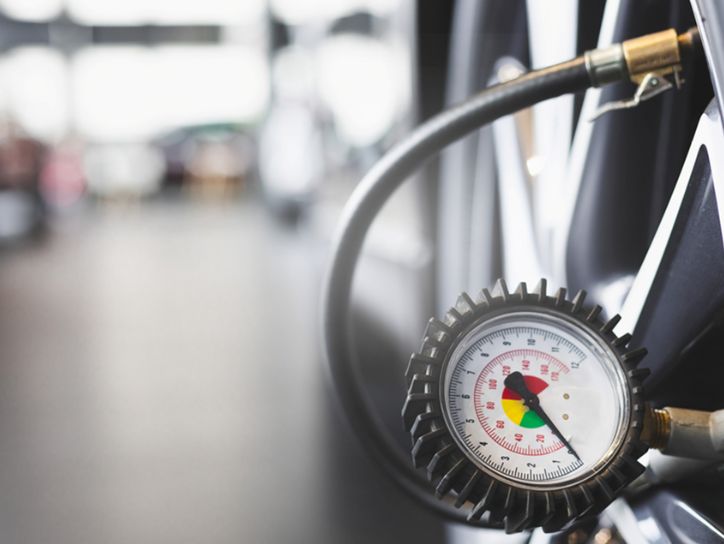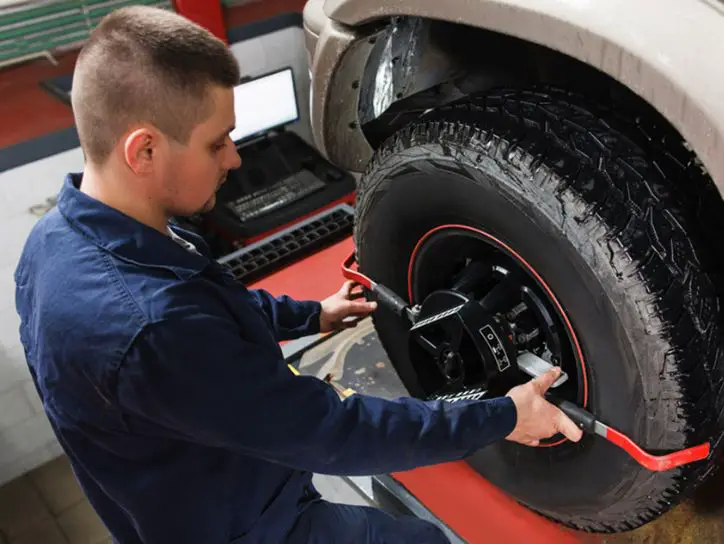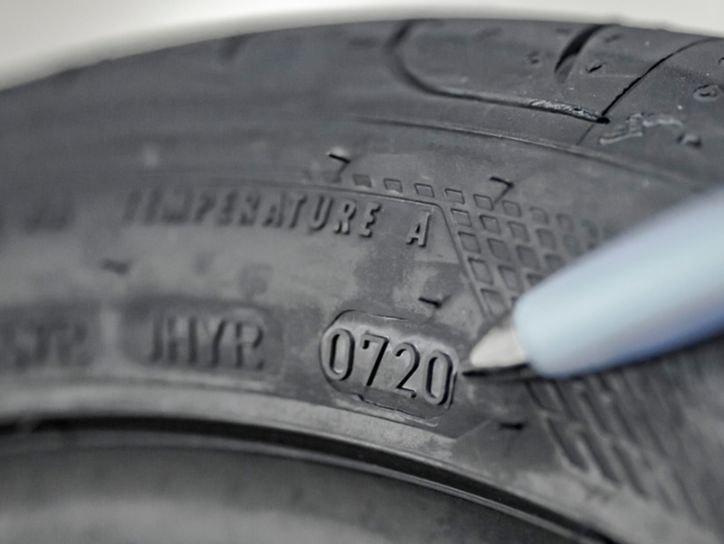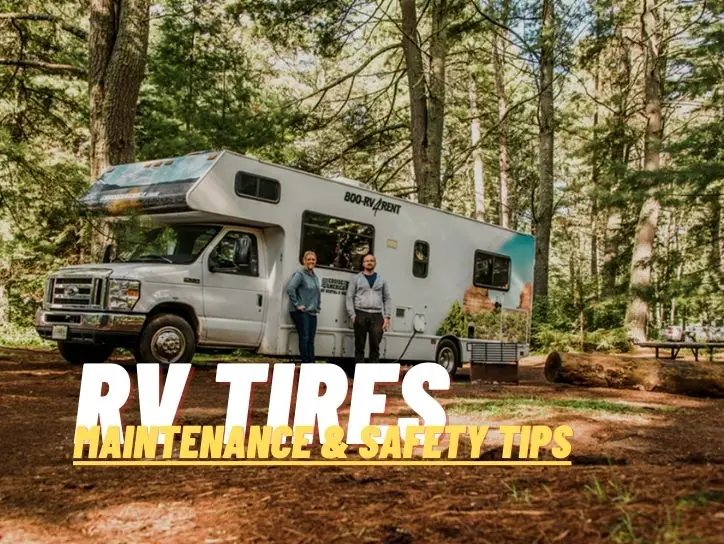Owning an RV opens up a world of adventure, freedom, and memorable experiences. However, it also comes with a unique set of responsibilities, one of which is maintaining your RV tires.
With proper RV maintenance and safety measures, you can extend the life of your RV tires and keep your journey on the road smooth and worry-free. In this article, we’ll discuss some essential tips to maintain and prolong the life of your RV tires, ensuring a safer and more enjoyable RVing experience.
Choose the Right Tires for Your RV
The first step in extending the life of your RV tires is selecting the right ones.
Not all tires are created equal, and using the wrong type can lead to premature wear or even dangerous blowouts. Consult your RV owner’s manual to determine the appropriate size, load capacity, and type of tire for your vehicle.
Additionally, you may want to consider upgrading to higher-quality tires for better performance and durability. You can use sites like radialzone to read reviews and recommendations on the best tires for your specific RV model.
When selecting tires, pay attention to the following factors:
- Size: Choosing the correct tire size is crucial to ensure optimal performance and safety. Incorrectly sized tires can negatively affect handling, load-carrying ability, and tire life.
- Load capacity: Your RV tires must be able to support the weight of your vehicle and its contents. Select tires with a load-carrying capacity that meets or exceeds your RV’s Gross Vehicle Weight Rating (GVWR).
- Speed rating: The speed rating indicates the maximum speed at which a tire can safely carry a load. Choose tires with a speed rating suitable for your RV’s top speed.
Maintain Proper Tire Pressure
Underinflated or overinflated tires can cause uneven wear, poor handling, reduced fuel efficiency, and even catastrophic tire failure. It’s essential to check your tire pressure regularly, preferably before each trip, and ensure they are inflated according to the manufacturer’s recommendations.
A high-quality tire pressure gauge is a must-have tool for any RV owner, and you can find more information about tire pressure recommendations at various tire manufacturer websites. I’ve also listed the best portable air compressors for RV that you can carry during travel.
Factors that can affect tire pressure include
- Temperature: Tire pressure can decrease as the temperature drops and increase as the temperature rises. It’s essential to check tire pressure during significant temperature changes.
- Altitude: As you travel to higher elevations, tire pressure can increase due to lower atmospheric pressure. Adjust your tire pressure accordingly when traveling to different altitudes.
- Load: Ensure your tire pressure is adjusted to accommodate changes in your RV’s load, as specified by the manufacturer.

Regular Tire Inspections
Inspecting your tires for signs of wear, damage, or foreign objects embedded in the tread should be a regular part of your pre-trip routine. When inspecting your tires, look for the following:
- Cracks, cuts, punctures, or bulges in the sidewalls and tread: These can indicate potential weak spots that could lead to tire failure.
- Uneven wear patterns: Uneven wear can result from improper tire inflation, misaligned wheels, or suspension problems. Address these issues promptly to prevent further damage to your tires.
- Tread depth: The U.S. Department of Transportation recommends replacing tires when the tread depth reaches 2/32 of an inch (1.6mm).
- Foreign objects: Remove any stones, nails, or debris lodged in the tread to prevent further damage.
You can use a tread depth gauge or the penny test to measure the remaining tread. Regularly inspecting your tires can help you spot potential issues early, allowing you to address them before they lead to more significant problems or unsafe conditions.
Rotate and Balance Your Tires
Rotating and balancing your tires can help ensure even wear, prolonging their life and improving your RV’s handling. Most experts recommend rotating your tires every 5,000 to 7,000 miles or according to the manufacturer’s recommendations. Follow a specific rotation pattern based on your RV’s tire configuration (front-to-rear, side-to-side, or a combination).
Balancing should also be done periodically, especially if you notice vibrations or uneven wear patterns. Tire balancing involves adjusting the weight distribution around the wheel to ensure that it rotates evenly. A professional tire shop can assist you with these services.
Align Your RV’s Wheels
Misaligned wheels can cause uneven tire wear and negatively impact your RV’s handling. It’s a good idea to have your wheels aligned periodically, particularly if you notice uneven wear or your RV is pulling to one side. An RV service center can perform a wheel alignment to ensure your tires wear evenly and your vehicle handles properly.
During wheel alignment, technicians will adjust the following angles:
- Camber: The inward or outward tilt of the wheel when viewed from the front of the vehicle. Incorrect camber can cause excessive wear on the inside or outside edge of the tire.
- Toe: The inward or outward angle of the wheels when viewed from above. Incorrect toe can cause rapid, uneven tire wear.
- Caster: The forward or rearward tilt of the steering axis when viewed from the side. An incorrect caster can affect steering stability and handling.

Protect Your Tires from the Elements
Sun, heat, and moisture can all take a toll on your RV tires, causing them to age and degrade more quickly. To protect your tires from the elements:
- Park on a clean, dry surface whenever possible to prevent water damage and slow the aging process.
- Use tire covers to shield your tires from UV rays and heat, which can cause the rubber to deteriorate.
- Avoid parking near sources of ozone, such as electric motors or generators, as ozone exposure can accelerate tire aging.
Properly Maintain Your RV’s Suspension and Braking Systems
A well-maintained suspension and braking system can help extend the life of your tires by ensuring even weight distribution and reducing excessive tire wear. Regularly inspect and service your RV’s suspension and braking systems, including:
Checking for worn or damaged suspension components
- Inspecting brake pads and rotors for wear
- Adjusting or replacing brake components as needed
- Lubricating moving parts to reduce friction and wear
Store Your RV Properly
When your RV is not in use, proper storage can help prolong the life of your tires. Here are some tips for storing your RV:
Inflate tires to the recommended pressure.
- Use tire covers or other UV-resistant materials to protect tires from sunlight.
- Place your RV on level ground to avoid unnecessary stress on the tires.
- Use wheel chocks to keep your RV in place and prevent it from rolling.
- If possible, elevate your RV on jack stands or blocks to take the weight off the tires and reduce the risk of flat spots.
Don’t Overload Your RV
Overloading your RV puts additional stress on your tires and can lead to premature wear, poor handling, and even tire failure. Consult your owner’s manual for your RV’s maximum weight limit (Gross Vehicle Weight Rating or GVWR) and ensure your load is distributed evenly.
When packing your RV, prioritize essential items and consider leaving non-essential items behind to avoid the unnecessary weight. Regularly weigh your RV at public scales to ensure you are within the weight limits and adjust your load accordingly.
Monitor Tire Age
Even well-maintained tires have a limited lifespan. The Rubber Manufacturers Association (RMA) recommends replacing RV tires every 5 to 7 years, regardless of the remaining tread depth. To determine the age of your tires, locate the Tire Identification Number (TIN) on the sidewall, which contains the manufacturing date code.
If your tires are nearing the end of their recommended lifespan, it’s a good idea to replace them to ensure optimal safety and performance.

Invest in a Tire Pressure Monitoring System (TPMS)
A Tire Pressure Monitoring System (TPMS) can alert you to sudden changes in tire pressure, helping you avoid a dangerous blowout or other tire-related issues.
While a TPMS is not a substitute for regular tire pressure checks, it can provide an extra layer of safety and peace of mind while on the road. Some TPMS options can even monitor the temperature of your tires, alerting you to potential overheating issues.
Respond to Vibration and Handling Issues Promptly
If you notice vibrations, poor handling, or other unusual symptoms while driving your RV, don’t ignore them. These issues could be a sign of tire imbalance, misaligned wheels, or suspension problems.
Addressing these problems promptly can help prevent uneven tire wear and extend the life of your tires.
Conclusion
Extending the life of your RV tires requires consistent maintenance, attention to detail, and a proactive approach to safety. By following the tips outlined in this extended article, you can enjoy a smoother ride, save money on tire replacements, and keep your RV adventures rolling. Safe travels!
